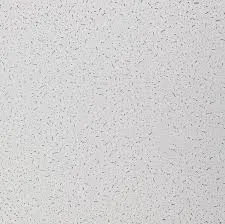8 月 . 07, 2024 09:20 Back to list
Exploring the Benefits and Applications of Ceiling Grid Main Tee Systems in Modern Architecture
Understanding Ceiling Grid Main Tee A Key Element of Suspended Ceilings
In the world of modern architectural design and construction, ceiling systems play a crucial role in both aesthetics and functionality. One of the most integral components of these systems is the ceiling grid main tee. Understanding what it is, how it works, and its applications can help designers and builders create effective indoor environments.
What is a Ceiling Grid Main Tee?
A ceiling grid main tee is a crucial structural element of a suspended ceiling system. Typically made from metal, the main tee acts as a support structure for the ceiling tiles or panels. These main tees are installed horizontally and run across the space, forming a grid-like structure that allows for the easy installation of various ceiling materials and provides crucial support for their weight.
There are usually two types of tees in a ceiling grid system the main tees, which span the larger distances and run perpendicular to the shorter cross tees. This combination allows for a sturdy yet flexible ceiling system that can adapt to different room sizes and configurations.
Functions and Benefits
The primary function of the ceiling grid main tee is to provide structural integrity. By distributing the weight of the ceiling tiles evenly, the main tee minimizes the risk of sagging or collapse. In addition, the grid system can accommodate the installation of other essential building elements, such as lighting fixtures, air conditioning vents, and fire alarm systems. This versatility makes suspended ceilings a preferred choice in commercial spaces, schools, and hospitals where various services must coexist seamlessly.
ceiling grid main tee

Another benefit of using ceiling grid main tees is the potential for easy access to the plenum space above the ceiling. In many buildings, this hidden area contains vital mechanical, electrical, and plumbing systems. The grid system allows for the easy removal of tiles to access these components for maintenance or upgrades without disturbing the entire ceiling.
Installation Process
The installation of a ceiling grid main tee is a structured process that requires attention to detail. First, contractors must mark the layout on the ceiling surface, ensuring that the grid aligns with the room's dimensions and any architectural features. Once marked, the main tees are suspended using anchors and hangers, which are secured to the ceiling joists or structural elements above.
After the main tees have been installed, the cross tees are added, completing the grid. Finally, ceiling tiles or panels are placed within the grid, creating a uniform and polished look. This installation process, while straightforward, requires precision to ensure both aesthetic appeal and functionality.
Applications in Design
Ceiling grid main tees are commonly employed in various building types, including offices, retail spaces, schools, and healthcare facilities. Their adaptability allows architects to incorporate different ceiling materials, colors, and textures to achieve the desired ambiance. Moreover, the grid system can easily accommodate features like sound insulation or acoustic panels, making them ideal for creating environments that require noise control.
In conclusion, the ceiling grid main tee is an essential element in the realm of suspended ceilings. It provides structural support, facilitates the integration of utilities, and allows for creative design possibilities. As construction and design continue to evolve, understanding the components like the ceiling grid main tee becomes increasingly critical for architects, builders, and facility managers alike, ensuring that they can create spaces that are both functional and aesthetically pleasing.
-
Revolutionizing Interior Design with Ceilings t grid Suspended SystemNewsOct.29,2024
-
Revolutionizing Ceiling Design with ceiling access panel with Gypsum Tile WaterproofNewsOct.29,2024
-
Revolutionizing Interior Design with PVC Gypsum Ceiling: A Comprehensive GuideNewsOct.29,2024
-
Elevating Interior Design with High quality Mineral Fiber Ceiling TilesNewsOct.29,2024
-
Revolutionizing Interior Design with PVC Gypsum Ceiling: A Comprehensive GuideNewsOct.29,2024
-
Elevating Interior Design with High-Quality Mineral Fiber Ceiling Tiles: A Comprehensive GuideNewsOct.29,2024







